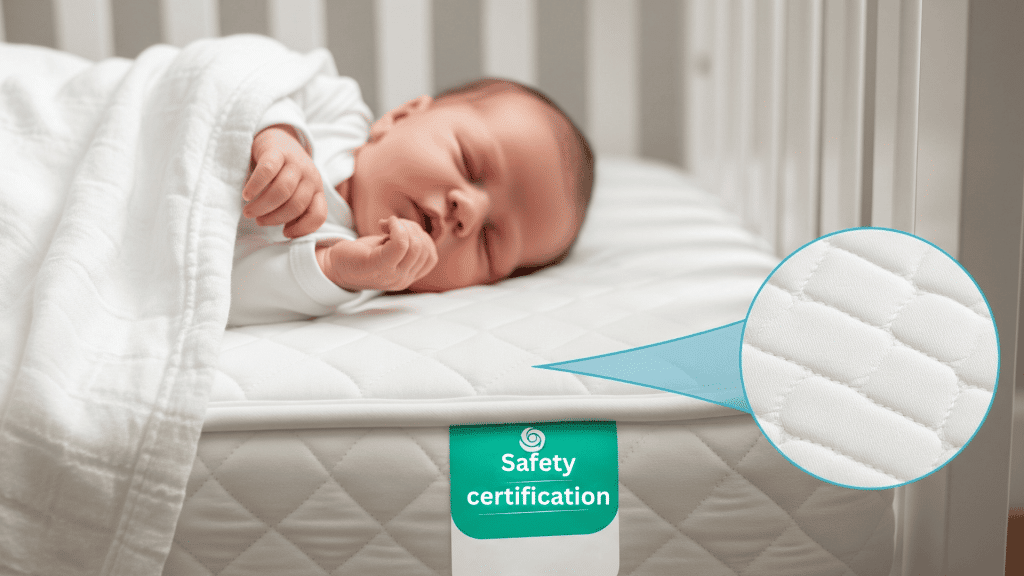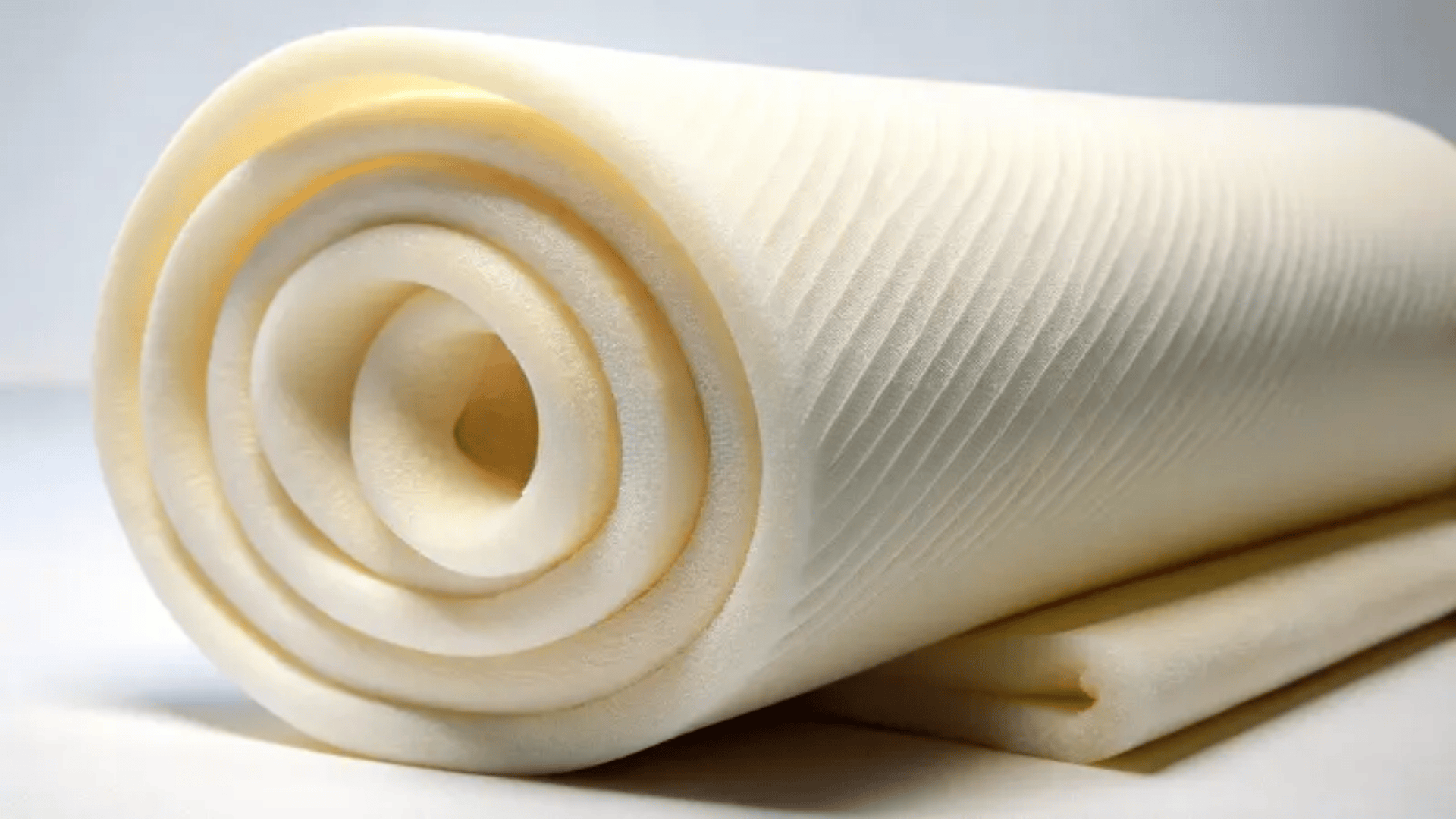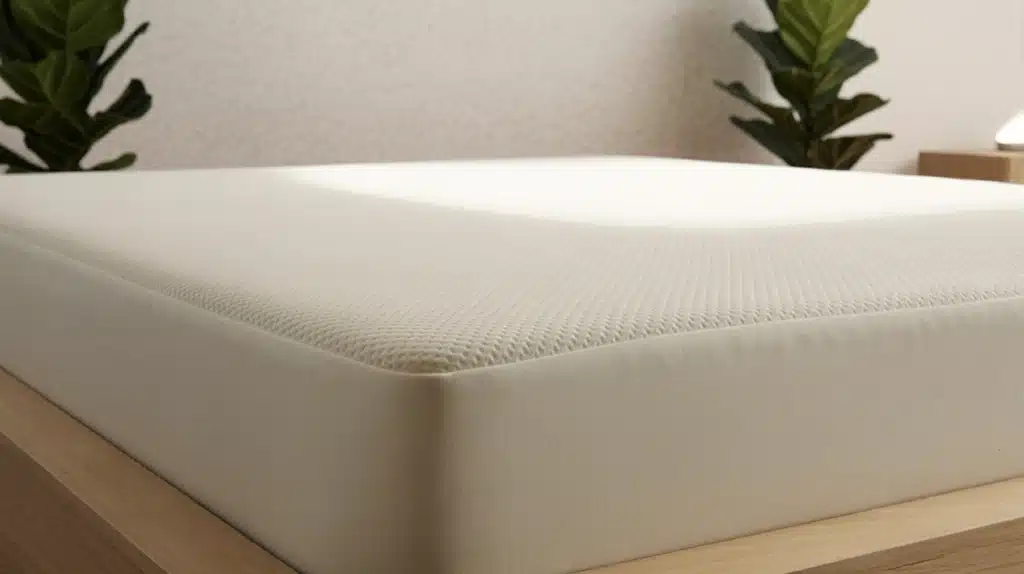You’ve probably smelled that strong “new foam” odor when unpacking a mattress or cushion. Many people worry that this smell means the polyurethane foam could harm their health.
With reports about toxic chemicals in household products, it’s natural to question what you’re sleeping on every night. After all, you spend eight hours in close contact with your mattress.
The truth about polyurethane foam safety isn’t as scary as some headlines suggest. Understanding the real science behind foam toxicity can help you make informed choices for your family’s health.
This blog will reveal what research actually shows about polyurethane foam safety, when you should be concerned, and simple steps to reduce any risks.
What is Polyurethane?
Polyurethane (PU) is a versatile synthetic material used in a wide range of products, from home furnishings to industrial components.
First developed in the 1930s, polyurethane is valued for its durability, flexibility, and resistance to wear, chemicals, and moisture. It belongs to a larger family of polymers but stands out due to its unique chemical composition and adaptability.
Types of Polyurethane
-
Rigid PU Foam: Hard and strong; used for insulation in buildings and appliances.
-
Flexible PU Foam: Soft and cushioning; used in mattresses, furniture, and car seats.
-
Other Forms: Includes coatings, adhesives, sealants, and elastomers.
Why People Worry About Polyurethane Toxicity
Concerns about polyurethane foam often center around its chemical composition and potential emissions. These worries usually fall into three categories:
- Chemical Off-Gassing (VOCs) – New polyurethane products can release volatile organic compounds, producing a “new foam smell.”
- Health Symptoms – Some individuals report headaches, respiratory irritation, or allergic reactions when exposed to new foam products.
- Media Reports – Stories about toxic chemicals in household products have made consumers more cautious.
While these concerns are valid to a point, much of the fear comes from misunderstanding how polyurethane foam is made and how it behaves once cured.
The Science Behind Polyurethane Foam Safety
Understanding the safety of polyurethane foam starts with knowing the difference between its raw materials and its final form.
During production, chemicals like polyols and diisocyanates are reactive and can be hazardous to workers if not handled with proper safety measures.
However, once these ingredients combine and the foam is fully cured, the end product becomes a stable, solid material. At this stage, it’s no longer the same as the potentially harmful substances used to make it. This is why polyurethane foam, when fully formed and used as intended, is generally considered safe for everyday household use.
Health Risks to Humans
Like many manufactured products, polyurethane foam can pose certain health considerations, especially when it’s brand new. Understanding the difference between short-term and long-term effects is key to making informed decisions.
Short-Term Risks
When a polyurethane foam product — such as a new polyurethane foam mattress or upholstered sofa — is first unpacked, it can emit VOCs. These emissions are responsible for the “new foam smell” and, while temporary, can cause minor symptoms in some people, such as:
- Mild headaches or dizziness
- Eye, nose, or throat irritation
- Occasional nausea, particularly in poorly ventilated spaces
For most people, these effects fade quickly as Indoor chemical pollutant levels drop.
Long-Term Risks
Scientific research has not found significant long-term health hazards from cured polyurethane foam in normal consumer use.
However, sensitive groups — including those with asthma, allergies, or chemical sensitivities — may experience persistent discomfort in environments with elevated chemical emissions. Prolonged exposure to poorly ventilated indoor spaces with multiple new foam items could reduce overall air quality.
Special Considerations
Older or cheaper polyurethane foam products may contain chemical flame retardants that have been linked to health concerns. Choosing certified products ensures these substances are not present.
In most cases, polyurethane foam is safe to use once off-gassing subsides, especially if purchased from reputable brands and paired with good ventilation practices. The key is balancing the comfort benefits of polyurethane foam with smart precautions to ensure a healthy indoor environment.
While polyurethane foam is used in everything from sofas to insulation, perhaps the most personal and prolonged exposure comes from our beds, raising an important question about the safety of a polyurethane foam mattress.
Polyurethane Foam in Mattresses: Is It Safe?
When it comes to concerns about polyurethane foam, one of the most frequently asked questions is whether polyurethane foam mattresses are safe to sleep on.
This concern is understandable — after all, you spend about one-third of your life in bed, meaning prolonged and close contact with the material for hours at a time.
Polyurethane foam mattresses are popular for their comfort, durability, and ability to contour to the body, reducing pressure points.
They are widely used not only in standard beds but also in sofa beds, RV mattresses, and guest beds.
Key Safety Factors
-
Certifications Matter – Choosing a mattress with certifications such as CertiPUR-US®, OEKO-TEX® Standard 100, or GREENGUARD Gold ensures that the foam has been tested for low VOC emissions, contains no harmful heavy metals, and is free from certain toxic flame retardants and ozone depleters.
-
Off-Gassing Timeline – For most high-quality polyurethane foam mattresses, any initial odor dissipates significantly within a few days to a couple of weeks. Proper ventilation during this period speeds up the process.
-
Ventilation Practices – When unpacking a new mattress, place it in a well-ventilated room or near open windows. Using fans or air purifiers can help disperse any emissions more quickly.
| Memory Foam Note
It’s worth noting that most memory foam mattresses are actually made from polyurethane foam with additional chemicals to enhance softness and resilience. The safety considerations for memory foam are essentially the same as for standard polyurethane foam — certification, ventilation, and product quality make the biggest difference in safety. |
Who Should Be More Cautious?

While polyurethane foam is generally safe, certain groups may want to be extra careful:
-
Pregnant Women – Some experts recommend minimizing exposure to new foam products to avoid any VOC exposure during pregnancy.
-
Infants & Young Children – Their developing systems can be more sensitive to chemical exposure, making low-VOC crib mattresses a better choice.
-
People with Chemical Sensitivities – Those with asthma or multiple chemical sensitivity (MCS) may prefer natural alternatives.
-
Workers in Foam Manufacturing – Direct exposure to raw chemicals during production requires protective measures.
While polyurethane foam is generally considered safe, there are simple steps you can take to further minimize any potential exposure and create a healthier indoor environment.
Tips to Reduce Potential Risks
If you want the comfort of polyurethane foam but also want to minimize potential risks:
-
Store new foam items separately to let any initial emissions dissipate before use.
-
Use natural fiber covers to create a breathable barrier between you and the foam.
-
Add air-purifying plants like peace lilies or spider plants to help absorb trace VOCs.
-
Avoid overheating foam products to prevent increased chemical emissions.
-
Choose transparent brands that disclose their materials and manufacturing processes.
-
Introduce foam products gradually into bedrooms for sensitive individuals.
-
Layer with natural materials like latex, wool, or cotton to reduce direct contact.
-
Repair instead of replacing to minimize introducing new foam into your home.
In short, these small adjustments can help you enjoy polyurethane foam products with greater confidence, ensuring comfort without compromising your indoor air quality.
Polyurethane Foam vs Other Materials
While understanding the safety profile of polyurethane foam is important, it’s equally useful to compare it with other popular mattress and cushioning materials to see how it stacks up in terms of health, comfort, and environmental impact.
| Material | Safety | Comfort | Cost | Eco-Friendliness |
|---|---|---|---|---|
| Polyurethane Foam | Safe when certified | High | Affordable | Not biodegradable |
| Natural Latex | Hypoallergenic, may cause latex allergies | High | Expensive | Renewable |
| Spring Mattress | Safe, often contains foam layers | Medium | Varies | Mixed |
| Organic Cotton/Wool | Non-toxic, breathable | Medium | High | Eco-friendly |
From a toxicity standpoint, certified polyurethane foam performs similarly to other safe materials, but its environmental footprint is higher since it’s petroleum-based.
Final Verdict: Is Polyurethane Foam Toxic?
Polyurethane foam often gets a bad reputation, but much of it comes from misunderstanding. Yes, it starts as industrial chemicals — but the finished, cured foam in mattresses, furniture, and other household products is stable and widely considered safe.
The real focus shouldn’t be on fear, but on quality and manufacturing standards. Poorly made foam or products without safety certifications can pose more concerns than certified, well-produced options.
Its effect on health depends on where it’s made, how it’s processed, and how you use it in your home.
When you choose responsibly manufactured foam, maintain good indoor air quality, and match your purchase to your family’s needs, polyurethane foam can offer comfort without unnecessary risk.
Think of it as a tool — safe and practical when chosen wisely, and capable of being part of a healthy, comfortable lifestyle.
The Bottom Line
Research shows that certified polyurethane foam poses minimal health risks when used properly. While new foam products may release temporary odors, these fade quickly with good ventilation. The key is choosing products with safety certifications like CertiPUR-US® and allowing proper air-out time.
For most people, polyurethane foam offers safe, comfortable sleep. Those with chemical sensitivities might prefer natural alternatives, but quality foam remains a practical choice for millions of households.
Your health matters, so make informed decisions based on facts, not fear. Consider your family’s specific needs, budget, and sensitivities when selecting foam products.
What’s your experience with polyurethane foam products? Share your thoughts and questions in the comments below. We’d love to hear from you!
Frequently Asked Questions
Is Polyurethane Foam Toxic to Manufacturers?
Yes, during manufacturing, workers can be exposed to harmful chemicals like diisocyanates. Without proper protective gear and ventilation, these can cause respiratory irritation, skin problems, and other health issues.
Can Polyurethane Foam Be Recycled or Disposed of Safely?
Yes, polyurethane foam can be recycled into carpet underlay or insulation. If recycling isn’t available, dispose of it at an approved waste facility to prevent environmental harm and ensure safe, responsible handling.
What Are the Signs of Toxic Exposure to Polyurethane Foam?
Signs may include headaches, dizziness, eye or throat irritation, coughing, and nausea, especially when the foam is new. Symptoms usually improve with fresh air and proper ventilation during the off-gassing period.









